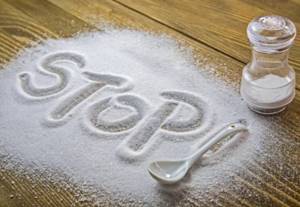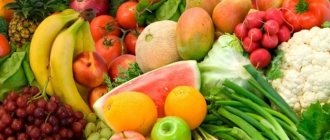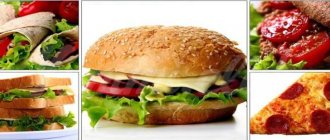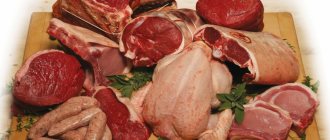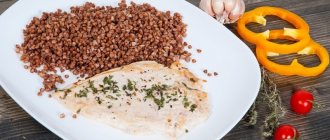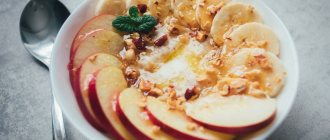One of the most important factors that is included in complex therapy for high blood pressure is a non-drug method. Negative factors contribute to a decrease in the body’s adaptive capabilities and provoke persistent chronically high blood pressure.
According to studies, properly selected nutrition helps stabilize blood pressure, allowing blood pressure levels to be lowered to age-appropriate levels. The Dash diet for hypertension, developed by American nutritionists, is considered the most effective and gives amazing results. Let's analyze the basis of the blood pressure diet together.
Basic principles

What makes the dash diet different from the rest?
- The main concept is “portion”, the volume of which and the daily norm are clearly stated.
- Balanced diet: it contains fats, proteins and carbohydrates.
- Focus on fiber: it is good for the heart and blood vessels and at the same time provides long-term satiety, allowing you not to feel hungry and eat smaller portions.
- Enriching the body with potassium, magnesium and calcium through proper nutrition, not medications.
- Minimum fat intake.
- Limiting salt, ideally avoiding it completely.
- There is no time limit; you can stay on the dash diet for the rest of your life.
- It involves a gradual transition to a vegetarian diet.
A stepwise transition to a new food system is important: prohibited foods are excluded from the menu gradually (no more than one per day). How to do this step by step:
- Keep a diary to take into account the amount of calories consumed, portion sizes and track violations of prohibitions for self-control.
- Limit salt intake.
- Increase the amount of fruit.
- Avoid fatty meats.
- Replace coffee and tea with fermented milk drinks and natural juices.
- Do not eat drinks with solid food (cookies, sandwiches).
- Include more vegetables in your diet.
- Replace sweets and baked goods with fruits, nuts, and dried fruits.
The Dash diet is primarily prescribed for hypertension; losing weight is not its ultimate goal, so you don’t need to expect quick results. On average, losses can range from one and a half to 5 kg per week.
Where to start - tips for beginners
A few days before starting the Dash diet, it is advisable to keep a notebook in which to write down everything that was eaten for breakfast, lunch, dinner, and also in between meals. By analyzing the records, it is easier to make adjustments to the menu, gradually replacing your favorite dishes until they fully comply with the principles of the blood pressure diet. As you can see, you don’t have to suddenly start changing your habits and life. Here are some examples of tips that will help you change your diet:
- There are few vegetables in the diet, add one serving for dinner or lunch;
- no fruits, add them to your snack between lunch and dinner;
- When reading the composition of products, choose those that do not contain preservatives, dyes or flavors;
- gradually introduce dairy products with a low fat content - kefir;
- replace instant cereals with whole grains;
- in winter, use frozen vegetables, fruits, berries;
- add nuts, seeds and legumes to your menu.
And also read on our website: The benefits and harms of fasting for hypertension, the essence and types of diet, as well as the basic rules during treatment
However, this is not all the recommendations. When switching to the Dash diet for hypertension, you should simultaneously begin to reduce the caloric content of food, for this:
- eat more fruits instead of the usual sweets. This will save 200 kcal;
- use vegetables as a side dish - 50 kcal;
- low-fat or low-fat foods will reduce calorie content by 70 kcal.

You can reduce calorie content by changing portion sizes, using smaller plates and drinking up to 1.5 liters of water throughout the day.
Contraindications
It is believed that the diet called dash has no contraindications, since it is initially aimed at improving health. However, this is not quite true. Its goal is to lower blood pressure, so hypotension is first on the list of contraindications.
Despite the fact that it is recommended for diabetics, they cannot adhere to this nutritional system in its classic form, since it contains too many carbohydrates and sweets are allowed. The menu will have to be seriously adjusted.
During pregnancy and lactation, it is strictly forbidden to limit animal fats to such a minimum.
People who have poor eyesight, joint pain and frequent nervous disorders should also be extremely careful with this technique. A low-fat diet may worsen the condition if you have these problems.
Alcohol increases blood pressure!
Alcohol, if you drink a lot of it, can raise your blood pressure. Let me also remind you that the following people suffer from excessive alcohol consumption:
- Liver (remember about cirrhosis)
- Brain (every morning after drinking, you flush a couple of thousand dead brain cells down the toilet along with your urine)
- Heart (alcoholic cardiomyopathy does not develop immediately, but with many years of drinking it occurs quite often)
In addition, alcohol is a high-calorie product. So in 50 g of vodka or cognac, for example, 120 kcal, in a glass of beer 0.5 l - 230 kcal, in a glass of dry wine 150 ml - 100 kcal, but an average cocktail of 250-300 ml “comes out” at 350-400 , or even up to 600 kcal (ah, Pina Colada).
Now let’s calculate how many extra kcal you consumed on the last holiday called Friday and with what snack.

That's it, now about the pleasant things.
In moderation, normal alcohol is a good remedy
- get warm
- Dilate blood vessels, which means reduce blood pressure
- Reduce stress and remove unnecessary tension
- Protect blood vessels from cholesterol (although this works better for the French, or at least in combination with the Mediterranean diet)
- Reduce blood sugar (which can be both a plus and a minus, but more on that here)
Advantages and disadvantages
Advantages:
- lowers cholesterol and blood pressure, improves heart function, normalizes blood circulation and glucose levels, prevents the development of cancer and type II diabetes;
- lack of hunger;
- developing correct eating habits;
- slow, sustainable and guaranteed weight loss;
- despite the fact that it was originally intended for hypertensive patients, it can be followed by everyone;
- Such food will cost less than usual.
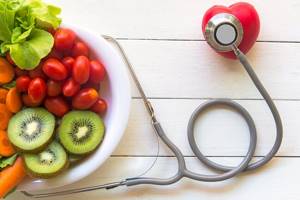
Flaws:
- it will take months for a complete restructuring of the body and significant weight loss;
- fast foods and semi-finished products are prohibited;
- a long-term absence of animal fats in the diet leads to dry skin, aggression, fatigue, decreased attention, vision problems and joint pain;
- trans fats in the form of legal margarine are harmful to health;
- A fairly large amount of carbohydrates in the menu is the main reason for weight gain.
Life story
For example, I just have a relative who experienced firsthand what the dash diet is. She found out about it on a special forum for hypertensive patients. Since at the age of “nearing 50” the woman began to have alarming problems with blood pressure. And she did well, not wanting to rely only on pills, she began to look for alternative methods of treatment for herself. Here's what she says:
“Undoubtedly, at first it was difficult for me to get used to the new menu: for a long time I could not eat only lightly salted food and give up sugar. After all, in my everyday life I’m used to sausages, liver, salted fish, and ham.
But I wanted to live normally, and I understood that it was time to change my diet and lose weight! As a result, after just 2 weeks I learned to add flavor to food using herbal spices: herbs, onions, garlic. Well, I quite successfully replaced my favorite sweets with dates and dried fruits.
In fact, my efforts were not in vain - after 5 months my weight returned to normal and my blood pressure leveled out. In addition, shortness of breath has gone away, because I added walking in the fresh air to the dash diet! Now I feel good, the doctor stopped me taking daily pills to stabilize my blood pressure.”
That's all! Thank you very much, my friends, for reading and rating the articles in the comments, and also sharing the materials with your friends via social networks. See you again!
Product Lists
The lists of allowed and prohibited foods in the dash diet are not something immutable and static. American cardiologists, for example, did not prescribe taboos on bananas and grapes as too sweet, or on potatoes and corn as starchy. And Western European versions of this nutrition system are already making similar adjustments for those who are losing weight with its help.
Allowed:
- legumes;
- cereals;
- vegetables;
- fruits;
- nuts, seeds;
- minimally fatty dairy products (no more than 1.5%), meat, fish;
- seafood;
- bread: rye, whole grain, yeast-free, with bran;
- spices, seasonings, dressings (lemon juice, mustard, vinegar).
The dash diet involves gradually giving up meat and fish and switching to a vegetarian diet if you need to constantly maintain normal blood pressure and weight (we have already talked about the connection between excess weight and hypertension).
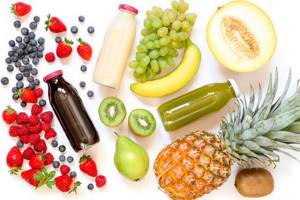
Prohibited/restricted:
- alcohol, carbonated drinks;
- snacks;
- sausages, meat by-products, canned food, smoked meats;
- marinades, pickles;
- fatty dairy products (more than 1.5%), meat, fish;
- butter, margarine;
- baked goods, wheat bread;
- sugar, sweets;
- fast food;
- semi-finished products.
The list of prohibited foods is relative, since several times a week it is allowed to eat up to 5 servings of sweets. This also applies to baked goods, wheat bread, butter and margarine. Nutritionists insist that if this system is used for weight loss, such “goodies” should be abandoned.
It is surprising that, due to its national roots, the American dash diet is silent about the consumption of coffee, which is a favorite drink in the United States. It is not on the list of prohibited products, but it is also not on the menu proposed by cardiologists. Considering the fact that it increases blood pressure, hypertensive patients still should not include it in their diet. But those who are losing weight, according to nutritionists, can drink a serving of coffee with low-fat milk and no sugar in the morning.
Another frequently asked question on the forums is why the dash diet does not give any recommendations regarding tea. Perhaps because this drink is not particularly popular among Americans. In addition, hypertensive patients should not get carried away with it because black increases blood pressure, and green puts a strain on the cardiovascular system.
Diet Basics
All products recommended by the therapeutic diet help stabilize blood pressure, reducing the risk of heart attacks and strokes.
The dash diet does not exclude the consumption of lean meat - it is a source of protein. However, the diet should contain vegetables, fruits and grains in sufficient quantities. They are the sources of vitamins and microelements, and also supply plant fibers for active intestinal function.
And also read on our website: How does cocoa affect blood pressure - does it increase or decrease it?

Consumption of sugar and animal fats is minimized, as they contribute to the formation of cholesterol deposits and provoke the occurrence of diseases of the circulatory system and provoke an increase in blood pressure.
For hypertension, it is necessary to reduce the amount of salt and increase the amount of fluid you drink. This reduces the risk of swelling and improves kidney function, stabilizing blood pressure.
Complete elimination or excessive restriction of NaCl is dangerous. The salt regime of a healthy person is 5-6 g/day.
Strict adherence to the principles of the diet guarantees success and healing of the body. To do this you need:
- divide the diet into 5-6 servings. This will: facilitate the functioning of the digestive system, increase the speed of metabolic processes, prevent surges in blood pressure and lower blood glucose levels;
- give preference to dietary meats;
- exclude saturated fats of animal origin from the menu;
- When cooking, use vegetable oils: olive, linseed;
- dose the amount of salt. For hypertensive patients, reduce its consumption to 1.5-3 grams per day. Give preference to the marine analogue;
- increase your drinking regime by drinking at least 1.5-2 liters of clean water per day;
- give up fried foods in favor of boiled, baked or steamed ones;
- completely exclude from the diet: fast food, confectionery, carbonated drinks, factory-produced meat and fish products, as well as semi-finished products and marinades;
- increase the emphasis on legumes, cereals, grain foods, as well as fresh vegetables and fruits;
- do not exceed the daily norm - 2000 calories.

Menu for the week
The original menu, proposed by American cardiologists, is designed to guide hypertensive patients how many times a day they should eat and how to properly distribute dash portions among meals.
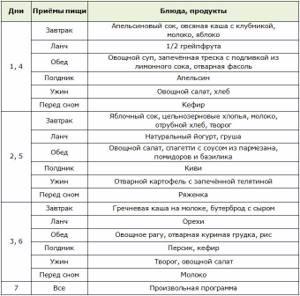
Recommendations for creating menus for meals
Breakfast options:
- any cereals (rice, buckwheat);
- porridges made from them with pieces of fruit, berries, nuts;
- cheese;
- bread;
- bread and cheese sandwiches;
- cottage cheese;
- juice/milk.
Lunches and afternoon snacks:
- fruits;
- nuts;
- berries;
- fermented milk drinks;
- salads from all of the above.
Lunches:
- vegetable broth soup;
- bread;
- boiled or baked meat/fish;
- side dish of cereals (rice, buckwheat) / stewed vegetables (stew), legumes;
- vegetable salad.
Dinners:
- vegetable salad;
- side dish (cereals/potatoes);
- boiled or baked meat/fish;
- cottage cheese casserole;
- any dishes made from dairy products;
- juice.
In order not to repeat the weekly diet menu over and over again, adjust it in accordance with the suggested options. A varied diet will help you stay on the new food system for as long as possible.
Some tips for reducing salt in your diet
Reducing salt in your diet is beneficial for everyone, even if they don't suffer from hypertension, so below we'll share some tips on how to do it:
- Remove the salt shaker from the table.
- Season your food with herbs and spices instead of salt, or add lemon or vinegar for salads.
- Avoid canned foods.
- Check food labels to check sodium content.
- Choose foods that contain less than 5% of your daily sodium value.
- Prefer unsalted options.
- Reduce foods and condiments that contain a lot of salt (pickles, soy sauce, olives, sausages, tomato sauce, mustard).
